The Economics and Statistics Division maintains archives of previous publications for accountability purposes, but makes no updates to keep these documents current with the latest data revisions from Statistics Canada. As a result, information in older documents may not be accurate. Please exercise caution when referring to older documents. For the latest information and historical data, please contact the individual listed to the right.
<--- Return to Archive
For additional information relating to this article, please contact:
February 12, 2019OWNERSHIP OF RESIDENTIAL PROPERTY BY NON-INDIVIDUALS, 2018 Statistics Canada has released new data from the Canada Housing Statistics Program on ownership of residential properties by non-individuals in Nova Scotia, Ontario and British Columbia. The data include information on the type of property, sector, and legal organization of non-individual entities.
A non-individual is an entity such as a corporation, trust, state-owned entity or non-profit. A residential property is considered owned by a "non-individual" if all owners are non-individuals or if the owners are a combination of individuals and non-individuals. A property is considered owned by an "individual" if all owners of a property are individuals.
In Nova Scotia, individuals owned 92.1 per cent of the residential properties in Nova Scotia, representing 86.5 per cent of the total assessed value of residential properties in 2018. There were 35,730 properties owned by non-individuals, representing 13.5 per cent of the total assessed value of residential properties.
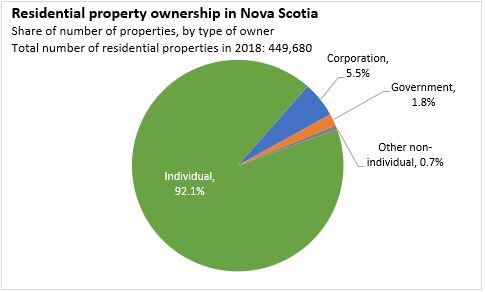
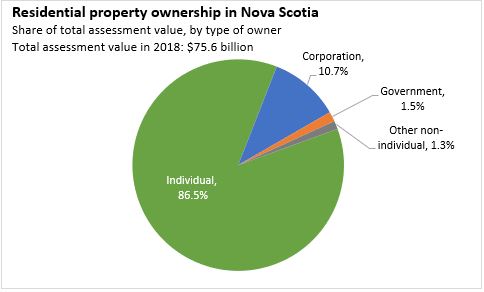
Of the total properties owned by non-individuals, most were owned by corporations (68.9 per cent), followed by government (22.9 per cent). A small number of residential properties were owned by sole proprietors or partnerships (1.3 per cent), and other or multiple legal types (2.4 per cent).

The most common type of residential property owned by non-individuals was vacant land (50.3 per cent) in 2018. The second most common was single-detached houses (23.0 per cent), followed by property with multiple residential units (16.6 per cent). Individuals are more likely to own single-detached houses (73.3 per cent of residential properties owned by individuals) followed by vacant land (14.7 per cent).
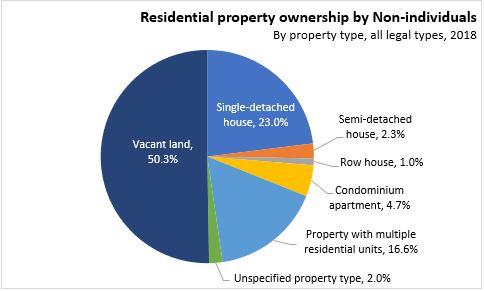
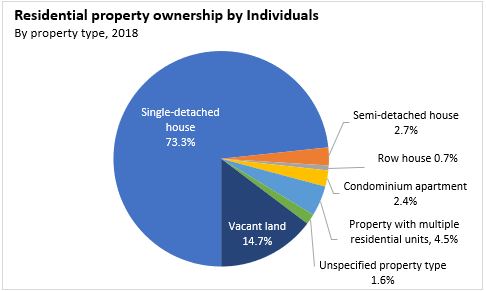
In 2018, the average assessment value of residential properties in Nova Scotia owned by non-individuals was $280,000. On average, assessment values for properties owned by non-individuals is higher than for properties owned by individuals. The average assessment value of residential properties owned by individuals was $158,000 in 2018. The average assessment value varied across property types, with the highest average value reported for properties with multiple residential units ($1.16 million for non-individual ownership) and the lowest for vacant land ($68,000 for non-individuals and $24,000 for individuals).
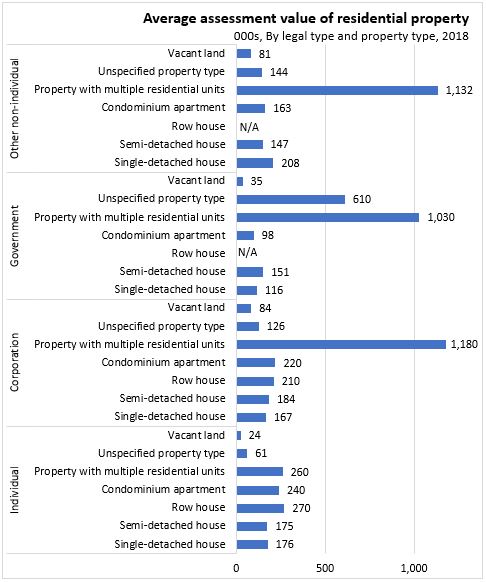
COMPARISON WITH ONTARIO AND BRITISH COLUMBIA
Data are available for Nova Scotia, Ontario and British Columbia and the composition of residential ownership differs across these three provinces.
In 2018, the total assessed value of residential properties was $75.6 billion in Nova Scotia, $2.2 trillion in Ontario and $1.4 trillion in British Columbia. This represented 449,690 residential properties in Nova Scotia, 4.8 million properties in Ontario and 1.7 million properties in British Columbia.
By assessment value, Ontario had the highest share of individual ownership while Nova Scotia had the highest rate of non-individual ownership.
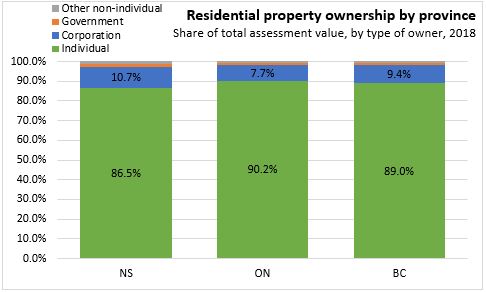
The share of residential properties owned by corporations was relatively stable across these three provinces in 2018, while government ownership was higher in British Columbia.

Of the residential properties owned by non-individuals, corporations owned the largest share in all three provinces. The rate of government ownership was significantly higher in British Columbia than in Ontario or Nova Scotia.
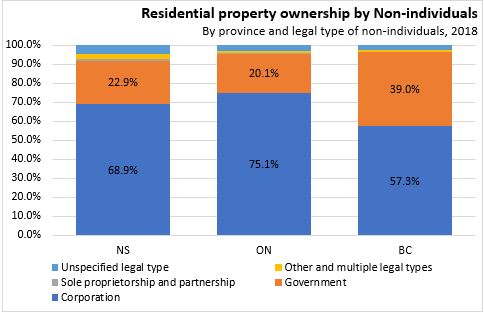
Vacant land represented close to half of the residential properties owned by non-individuals in all three provinces. Non-individuals were more likely to own condominium apartments in Ontario and British Columbia than in Nova Scotia, while single detached dwellings were more prevalent in Nova Scotia.

Individuals were most likely to own single detached homes in Nova Scotia and Ontario, while ownership of condominiums or multi-unit buildings were more prevalent in British Columbia. Vacant land was less prevalent in Ontario and British Columbia than it was in Nova Scotia.
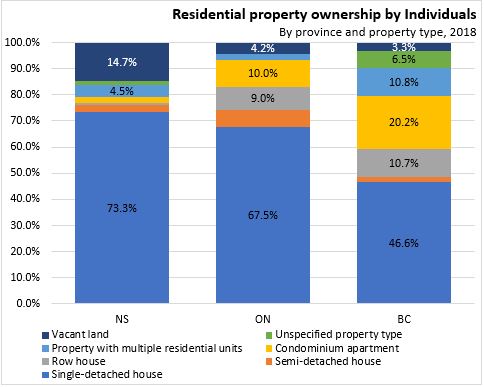
Source: Statistics Canada Tables 46-10-0023-01 (Non-individual ownership by legal type and industry) and 46-01-0019-01 (Ownership type of residential properties by property type and period of construction)
<--- Return to Archive